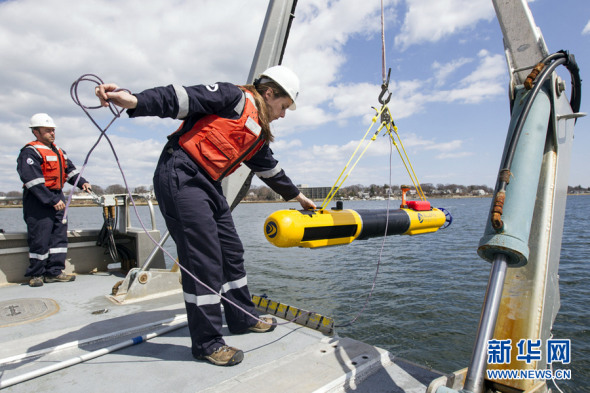

The Bluefin-21 autonomous underwater vehicle (AUV) is part of an additional search effort from the US Navy to locate the airliner, presumed to have crashed in the Southern Indian Ocean off the western coast of Australia. (Xinhua photo)
It could take days before the search of the missing Malaysian aircraft moves into the phase of deploying autonomous underwater vehicle, Chief Coordinator of the Joint Agency Coordination Center (JACC) Angus Houston said on Thursday. [Special coverage]
He made the remarks when talking to the Australian Broadcast Company (ABC)'s The World on Thursday night, not long after a new detection of signals were reported. JACC announced that whilst conducting an acoustic search Thursday afternoon, a RAAF AP-3C Orion aircraft has detected a possible signal in the vicinity of the Australian Defence Vessel Ocean Shield, which has detected four signals on Saturday and Tuesday.
Houston denied he had said the autonomous underwater vehicle will be deployed "in a couple of days". Instead, he stressed that it could take a number of days, up to 20 days or more, before the search operation could transit to underwater search phase.
He warned that even if the autonomous underwater vehicle is lowered to do the mapping, the task remains demanding.
"It could be a long, painstaking process," Houston said, "and there is only one vehicle." Houston said the water in the area is excessively deep with silty bottom, which may swallow things up and complicate the visual search effort.
Houston touted the international cooperation, especially in the military circles, in search of the missing Malaysia aircraft, saying it's "impressive" to see all nations are working together for a common purpose and it's "wonderful" that military personnel from different countries are cooperating with each other in a real- life circumstance.
Copyright ©1999-2018
Chinanews.com. All rights reserved.
Reproduction in whole or in part without permission is prohibited.